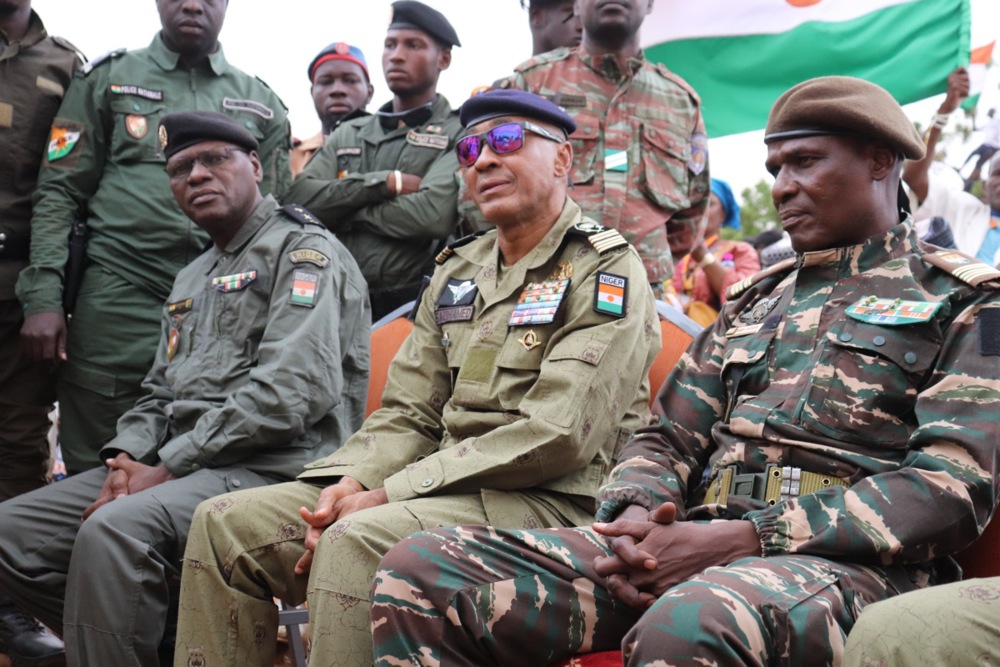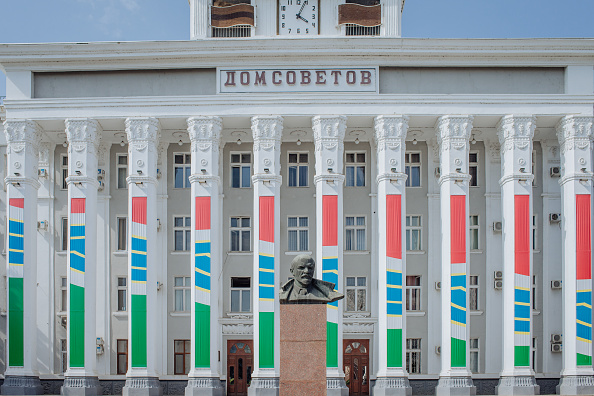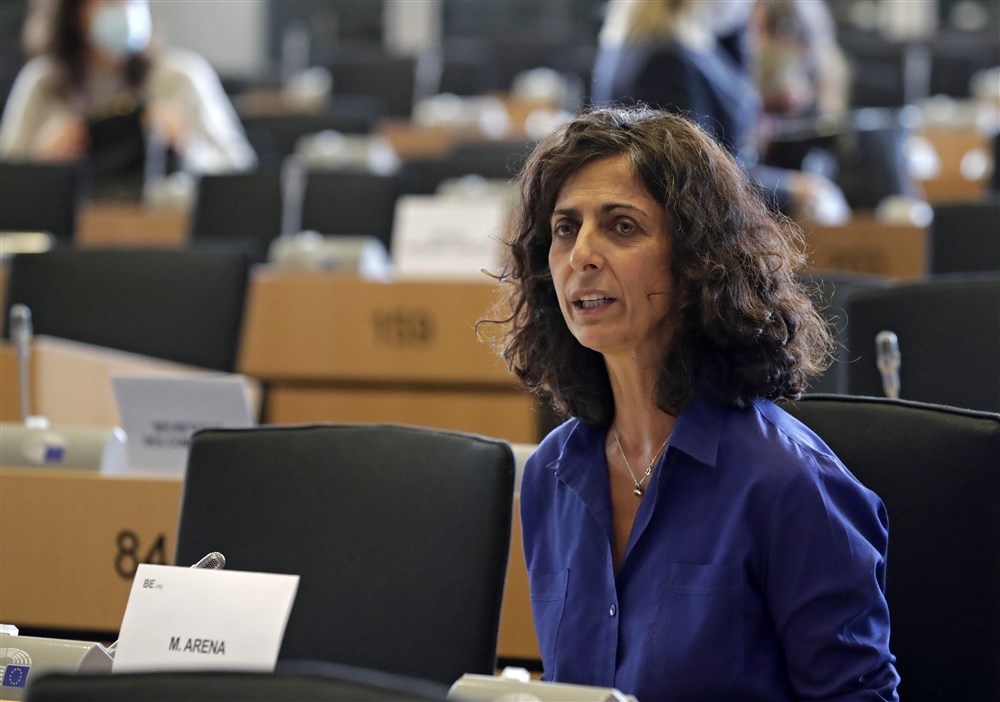In a world of war, we must recalibrate our grand-strategic thinking. Here are five geopolitical scenarios for what could happen in the coming years
It is beyond doubt that the “rules based international order” chapter of History is coming to a close, removing from the real world many of the traditional assumptions about Western primacy and dominance which, over the past few decades, have become so ingrained in the minds of our “strategic” elites.
Global affairs are certainly in the process of crossing into a new era, but the contour of that geopolitical destination – the configuration of forces that will define power relations between the key states – is yet undetermined.
There are plenty of rhetorical attempts by pundits – many just hawking their podcasts or consulting wares – to make the facts fit their pet theories, whether about the arrival of so-called “multipolarity” or the inexorable decline of the West.
Of more serious concern is the growing and well-directed “information warfare” by revisionist states like Russia and China, which are trying to further demoralise us and shape the narrative over what is supposed to follow the post-1945 US-dominated system. But they’re all grasping at straws.
In reality the world is too volatile and uncertain, and too many structural elements are in motion in the military, economic and political fields, to allow for definitive conclusions to be drawn as to what comes next.
No particular future can be willed into being purely by propaganda tricks or twisted analysis. And no state or grouping of states can claim to have a decisive strategic advantage in the world system at present or in the near future. In other words, it’s all to play for.
All main actors on the global stage still retain the ability to make different policy choices – whether winning moves, or mistakes – and change the course of events. It is worth considering, therefore, what are the main geopolitical scenarios – and some of their potential dynamics – that might frame the minds of those in charge of grand-strategic decisions, particularly in key Western capitals. In a very subjective order of likelihood:
- Downward spiral: multiple regional wars
The eruption of major armed conflict in Israel following the October 7 terrorist attacks by ISIS-Hamas has deepened the sense of a world veering towards the abyss of global conflagration. With Ukraine desperately trying to fight off Putin’s invasion and with China openly readying its own military machine for a potential war with the United States over Taiwan, the new escalation in the Middle East has been seen as confirming the implosion of global security as in the lead-up to 1914 and 1939.
No less eminent an historian than Niall Ferguson wondered, in early November, whether we are headed towards World War Three. The crises in the Ukraine, the Levant and East Asia are driven by the three main “neo-Axis” revisionist powers of the 21st century – Russia, Iran and China – which are drawing ever closer and support each other militarily, economically and diplomatically with one shared final purpose in mind: to wrest control of the international system away from the US-led Western alliance.
For now Western deterrence still holds with respect to its vital interests, as neither the Russians nor the Chinese appear to feel quite ready yet to directly take on NATO and the US, respectively. In the Middle East the situation is more complicated and Iran has multiple avenues for indirect escalation.
But even there the massive display of US and NATO naval power over the past few weeks appears to have deterred the feared assault by Hezbollah on Israel’s northern flank as the IDF went across into Gaza. Israel’s enemies may have missed their best window of opportunity so far, but others may open in the coming weeks.
To summarise, we are facing effective and concerted enemy action at a global scale, at a time of growing Western weakness and division. This is stretching Western – particularly US – military and economic resources and on current trends it will become an increasing problem the longer the neo-Axis maintains this triple geostrategic pressure on Ukraine, Israel and Taiwan.
In order to maintain this last-ditch level of deterrence over the long term – which may also involve limited military interventions at key points in the system in the coming years – Western countries will have to start transforming from welfare states to warfare states, becoming increasingly militarised and mobilised for wartime production.
This will have knock-on effects on other aspects of national and global development, with the likely result of dragging everyone down and undoing decades of progress. And in the end we might not escape the big war anyway.
- Catastrophe: generalised war
Right from the start of Putin’s invasion of Ukraine in February 2022 we have been only a stray missile away from escalation to a full-blown Russia-NATO war. The Doomsday Clock – founded in 1945 by Albert Einstein and his colleagues as a public indicator of nuclear annihilation risk – now stands at 90 seconds to midnight, the closest to global catastrophe it has ever been.
Today there are multiple pathways to conflict involving two or more nuclear-armed states, but a couple of points are worth bearing in mind. Firstly, despite popular belief – and the Doomsday Clock – there is nothing automatic about reaching nuclear escalation in a great power war that begins with conventional exchanges, precisely because each side is aware of the risks. The likelihood of such an escalatory dynamic is high but not guaranteed.
Secondly, it may be technically possible to fight and even “win” a limited nuclear war – although again, the weight of nuclear warfare theory stands against this notion. Certainly during the Cold War the Soviet General Staff was known for believing in this possibility, and perhaps the Chinese will come to believe it too. Such beliefs fuel a higher level of risk-taking and aggressiveness, again making a direct confrontation between the major powers more likely.
Finally, a third “world war” has been a possibility ever since the second one ended in 1945; but paradoxically, globalisation, technology and the nature of society, culture and politics in our time would make it more difficult to assemble and maintain globe-spanning alliances required to fight a world war over extended periods of time.
Rather than pitting two large armed camps against each other in the “classic” way, a WW3 is likely to be a much more messy and diffuse affair – though no less destructive – carried out to a significant extent with “hybrid” means. Indeed, there is merit to the proposition that in some respects a form of “world war” is already underway, certainly from the perspective of our adversaries.
To sum up, a civilisation-ending Third World War unleashing atomic Armageddon is a rather lazy assumption for what a great-power conflict – like Nato-Russia or China-US – can escalate into.
Unfortunately it may be more realistic to think about this situation as one of extremely destructive generalised war that once it disrupts key infrastructures and global economic and trade systems begins to feed on its own destruction in the manner of early modern conflicts such as the Thirty Years’ War. We are closer to that kind of outcome than most people imagine.
- Realpolitik: a new global settlement
Problems of vicious clashes of interests between powerful political entities, of wars and achieving or maintaining stability, are as old as organised human society. The solution – aside from wiping out the opponent – has tended to include some kind of agreement on the terms of future relations.
In the modern world with its more complex wars involving a multitude of mostly civilised belligerents, this has taken the form of great conferences and treaties, from Westphalia to Vienna, Versailles or Yalta, that have shaped their epochs.
Until very recently in human history – with Wilsonianism but most especially with the “human rights” movement post-1945 – the default mode of negotiating and settling international disputes was based on interests, power and (depending on the time and place) objective dynastic rights – in other words, on what may be anachronistically called a Realpolitik approach.
This is what the revisionist powers of the neo-Axis dream of today. Russia, China and Iran have no actual use for international law (except as a diplomatic smokescreen), let for alone liberal and human rights-informed values. As authoritarian states, their policy on the ground as well as in negotiations is always based on calculations of power in conjunction with “principles” that retain nothing or little from the corpus of international norms created since WW2.
And if the post-1945 structure of world power cannot be sustained anymore by unquestioned US and allied military and economic primacy, the idea of reverting to the historical patterns might gain currency, particularly with new and more populist national leaders coming to the fore in the West.
All we need, its advocates would say, is a Yalta II: a general settlement of all outstanding differences. Or even a more modestly-framed process, but that still resulted in a deal establishing new spheres of interest, of course significantly tilted in favour of Moscow and Beijing.
Whether anything like this is possible remains an open question. On the one hand, again, the world is much more complex now and – particularly at the political level in the West – has moved on more than ever before from the methods of Yalta.
But on the other hand, military and economic power remain concentrated broadly with the same key players that have dominated the Euro-Atlantic space since the 20th century – they can still call the shots if they want to.
Such a complete revolution in the conduct of international relations – the jettisoning of 80 years of Western diplomatic and political tradition – is difficult to comprehend today, and would be hard and risky to execute politically. This is why the two war scenarios above are perhaps more likely on current trends. But this is one of those contexts in which individual leaders can change the course of history, for good or bad.
- Upward spiral: world order restored
The most hopeful scenario on this list is also the most difficult to realise, but by no means impossible. There is a future world, perhaps 10-20 years from now, in which the West has gotten its act together and has held firm through a period of geopolitical turbulence while the neo-Axis countries spent their energies trying to dismantle the US-led world system, and eventually collapsed under their own internal and external failures.
All this can happen – but it requires urgent action and large-scale political, military and economic mobilisation across the West starting now.
Most importantly, as described in these pages, a thorough work of reversing the decades of Western moral disarmament and of restoring our martial spirit needs to be undertaken as a matter of priority. The clichéd Roman adage, “if you want peace, prepare for war” could not be more suitable to the challenges we face in our time.
A rearmed and refocused West, purged of the progressive neo-Left ideological garbage that has handicapped our societies for decades, would be more than able to keep Russia and China in check, shore up our geostrategic positions across the world, bring the so-called “global south” on-side, and stabilise the security situation.
There should be no illusions as to the difficulty of this geopolitical stabilisation task, given the strategic progress that Moscow and Beijing were allowed to make in recent years.
But it is also true that both of these states, as well as their lesser allies like Iran, have their own vulnerabilities – starting with the question of the leadership succession after Putin and Xi leave the scene.
The interim objective of stabilising the world system could be followed up in two ways. The first option would be to switch to an aggressive strategy of rolling back Russian and Chinese power from all the geographies where they have been projecting their influence. This would involve coercion but not necessarily major war, as the Reagan administration showed in the 1980s.
The second way forward would be to initiate – in a post-Putin and post-Xi world – a process of détente with the key adversaries, if the conditions permit.
Crucially, this initiative can only be undertaken from a position of strength. The purpose would be to restore a version of the world order that is at present crumbling, but to do it with the participation, in a safe and appropriate form, of all key powers. All this, however, is a question to be raised only after more immediate and vital problems are solved first – we are not on track with that mission.
- Damage control: fortress strategy
It is only consistent with the traditions of Western literary tragedy that the best should suffer the worst fate. In our ranking, this scenario comes last on account of its chances of being realised, but should arguably count as the most rational and appropriate – and therefore, best – strategic approach to pursue, particularly by Europe.
The record of Western strategy over the past few decades – certainly spanning the current and previous generations of top policy-makers and “strategists” – is abysmal.
The current “emergency situation” of a tri-continental multi-crisis, coming after the ignominious scramble out of Afghanistan, is the end result of a longer trend of Western underperformance in the field of statecraft. And with government posts being increasingly filled according to diversity quotas with products of woke-infested universities, we’re now scraping the bottom of the strategic skills barrel.
So we must be realistic as to the capacity of current government administrations in most Western countries to execute new, smart and aggressive strategic policies along the lines described in scenario 4 above, even if the political will, vision and direction were to be provided – which of course there is little chance it will be. The situation in terms of Western military planning and thinking is not – and cannot be – much better either, as demonstrated by the repeated failures of our “specialist” analytical communities to correctly assess the evolution of the Ukraine war.
Then there are the practical and material difficulties with resourcing a “defence renaissance” of the West and a countervailing strategy designed to block and then push back Russian and Chinese geopolitical gains across the key regions of the world.
Western states, laden with debt and expensive welfare commitments, and with sick, obese and generally physically-unfit younger generations, are structurally limited in how far they can increase their military power and capacity for geostrategic action.
In this situation, with the international security system starting to crumble before our very eyes, with powerful enemies already at the gates, with military resources and societal readiness arguably unequal to a potential wartime situation, and – especially – with a divided politics and massive immigration problems both in Europe and in the United States, a “retrenchment” strategy might make most sense.
This approach would reflect the reality that in some cases – as ours might be – resource overstretch means that it becomes impossible to defend well everywhere, and that hard choices must be made with respect to voluntarily “giving up” certain positions to gain strength in others.
Every imperial project, for example, experiences these kinds of dynamics in its history: sometimes as its concluding chapter, but sometimes – for example, in the case of Byzantium – as an intermediary act followed by a renaissance.
So there is something to be said for exploring a different type of Western conversation as well, one where “isolationism” is not necessarily a knee-jerk populist slogan, but a considered strategic choice linked to a concentration of forces as well as new rules and limits communicated as such to geopolitical foes.
Let them over-extend and start to fight for the spoils across Asia, the Middle East and Africa, and let us harry them from behind our own geopolitical “fortress” walls in Europe and the US – or so some might say.
Conclusion
The West’s grand-strategic situation is rapidly deteriorating under strong pressure by Russia in Ukraine, China in the Western Pacific and Iran with its proxies and allies in the Middle East.
For now, all these challenges are being managed – but only just. There is considerable wavering over the war in Eastern Europe; a mounting risk in the Levant, and a fast-expanding threat looming over Taiwan.
Even at the best of times, governments are almost completely absorbed with fire-fighting the latest crisis and just staying on top of the growing list of urgent problems to handle.
Thinking about long-term strategy has long been a luxury. But the world is now changing, and with old assumptions being overturned and worldviews becoming obsolete, the ability to make grand-strategic decisions returns as a vital necessity.
The scale and gravity of what lies ahead for the West in geopolitical terms cannot be understated; in fact, it can be observed in Ukraine, as a warning. What is happening there is so remote from our experience that even beginning to re-frame and re-calibrate our thinking for this new world of war and strife is a hard task. But we must get on with it.
Gabriel Elefteriu is deputy director at the Council on Geostrategy in London and a fellow at Yorktown Institute in Washington, D.C.






Europe’s capital needs media to challenge the status quo: That’s why Brussels Signal is launching